Role King Name Louis IX | Burial Saint Denis Basilica | |
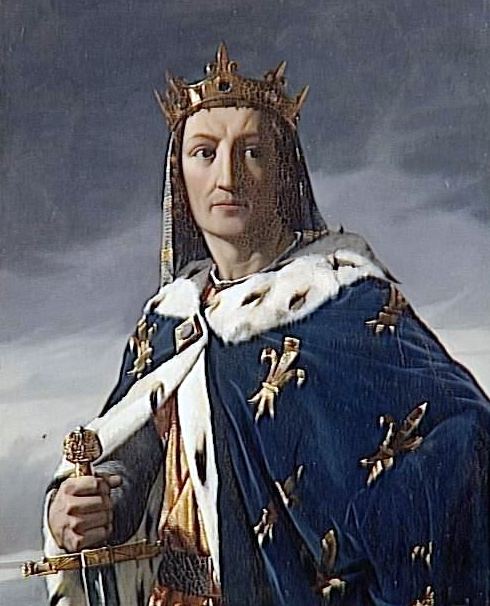 | ||
Reign 8 November 1226 – 25 August 1270 Born 25 April 1214Poissy, France ( 1214-04-25 ) Issueamong others... Isabella, Queen of NavarreLouis of FrancePhilip III of FranceJohn Tristan, Count of ValoisPeter, Count of Perche and AlenconBlanche, Infanta of CastileMargaret, Duchess of BrabantRobert, Count of ClermontAgnes, Duchess of Burgundy Parents Blanche of Castile, Louis VIII of France Children Philip III of France, Louis of France Siblings Charles I of Naples, Alphonse, Count of Poitiers, Isabelle of France, Robert I, Count of Artois Similar People Louis VIII of France, Philip II of France, Philip IV of France, Louis XIV of France, Philip III of France | ||
The Crusades of Saint Louis IX of France - A Documentary
Louis IX (25 April 1214 – 25 August 1270), commonly known as Saint Louis, was King of France and a canonized saint. Louis was crowned in Reims at the age of 12, following the death of his father Louis VIII the Lion, although his mother, Blanche of Castile, ruled the kingdom until he reached maturity. During Louis's childhood, Blanche dealt with the opposition of rebellious vassals and put an end to the Albigensian crusade which had started 20 years earlier.
Contents
- The Crusades of Saint Louis IX of France A Documentary
- Homily 08 25 2011 Fr Pacwa SJ St Louis IX of France King Patron of the Third Order
- Early life
- Marriage
- Disputation of Paris
- Crusading
- Seventh Crusade
- Four years in Palestine
- Eighth Crusade
- Patron of arts and arbiter of Europe
- Religious nature
- Children
- Death and legacy
- Veneration as a saint
- Places named after Saint Louis
- Notable portraits
- In fiction
- References
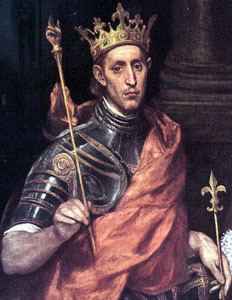
As an adult, Louis IX faced recurring conflicts with some of the most powerful nobles, such as Hugh X of Lusignan and Peter of Dreux. Simultaneously, Henry III of England tried to restore his continental possessions, but was defeated at the battle of Taillebourg. His reign saw the annexation of several provinces, notably Normandy, Maine and Provence.

Louis IX was a reformer and developed French royal justice, in which the king is the supreme judge to whom anyone is able to appeal to seek the amendment of a judgment. He banned trials by ordeal, tried to prevent the private wars that were plaguing the country and introduced the presumption of innocence in criminal procedure. To enforce the correct application of this new legal system, Louis IX created provosts and bailiffs.
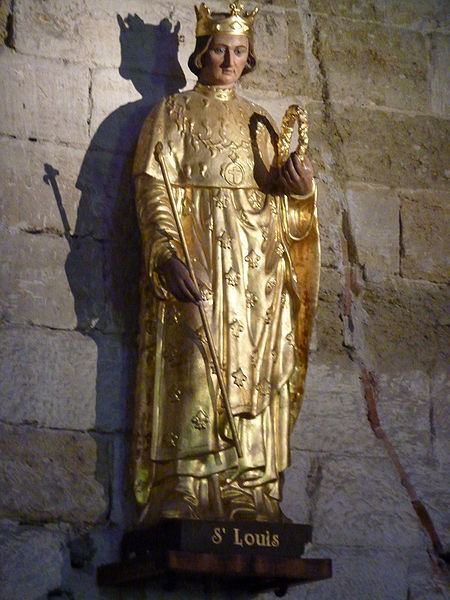
According to his vow made after a serious illness, and confirmed after a miraculous cure, Louis IX took an active part in the Seventh and Eighth Crusade in which he died from dysentery. He was succeeded by his son Philip III.
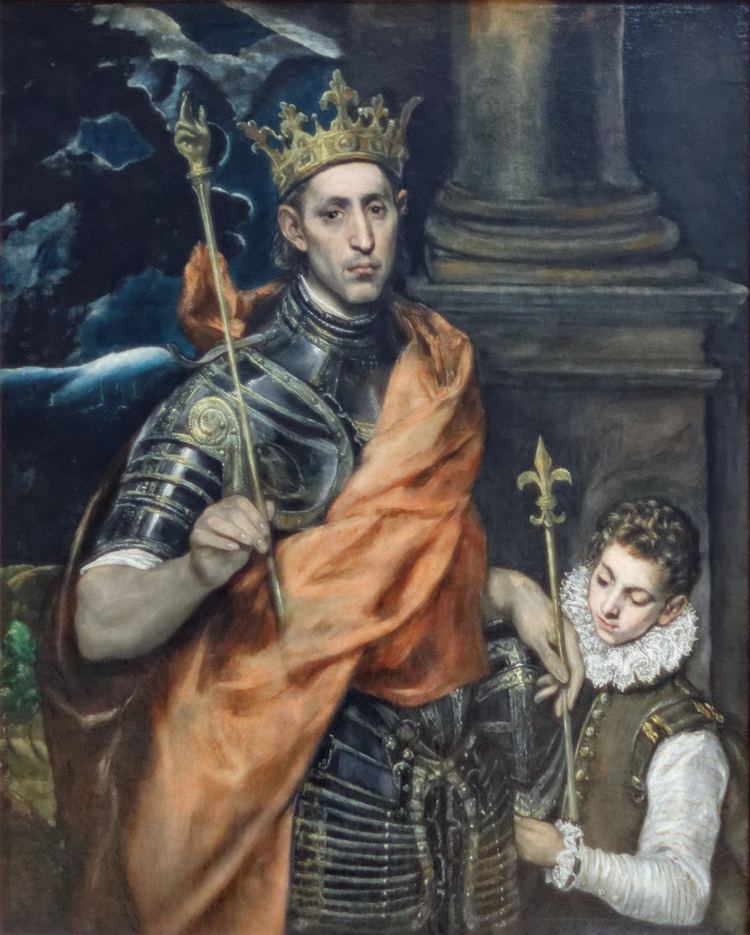
Louis's actions were inspired by Christian values and Catholic devotion. He decided to punish blasphemy, gambling, interest-bearing loans and prostitution, and bought presumed relics of Christ for which he built the Sainte-Chapelle. He also expanded the scope of the Inquisition and ordered the burning of Talmuds. He is the only canonized king of France, and there are consequently many places named after him.
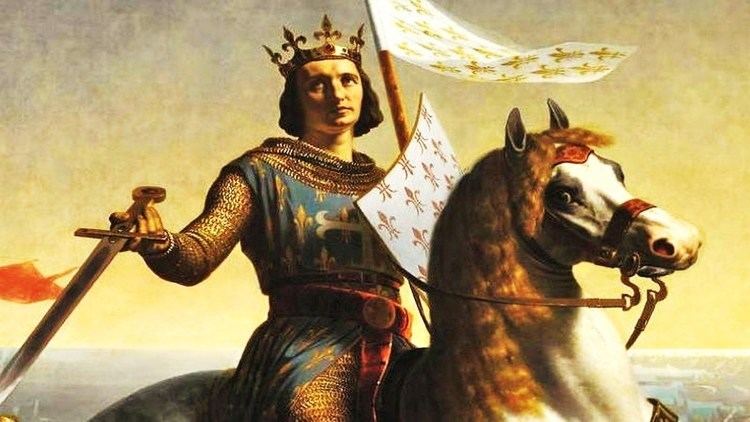
Homily 08-25-2011 - Fr. Pacwa, SJ - St. Louis IX of France, King, Patron of the Third Order
Early life
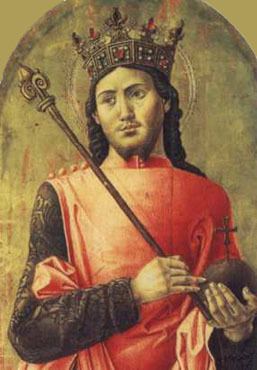
Louis was born on 25 April 1214 at Poissy, near Paris, the son of Prince Louis the Lion and Princess Blanche, and baptised in La Collégiale Notre-Dame church. His grandfather on his father's side was Philip II, king of France; while his grandfather on his mother's side was Alfonso VIII, king of Castile. Tutors of Blanche's choosing taught him most of what a king must know—Latin, public speaking, writing, military arts, and government. He was 9 years old when his grandfather Philip II died and his father ascended as Louis VIII. A member of the House of Capet, Louis was twelve years old when his father died on 8 November 1226. He was crowned king within the month at Reims cathedral. Because of Louis's youth, his mother ruled France as regent during his minority.

Louis' mother trained him to be a great leader and a good Christian. She used to say:
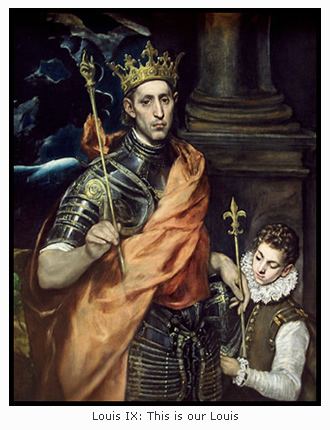
I love you, my dear son, as much as a mother can love her child; but I would rather see you dead at my feet than that you should ever commit a mortal sin.
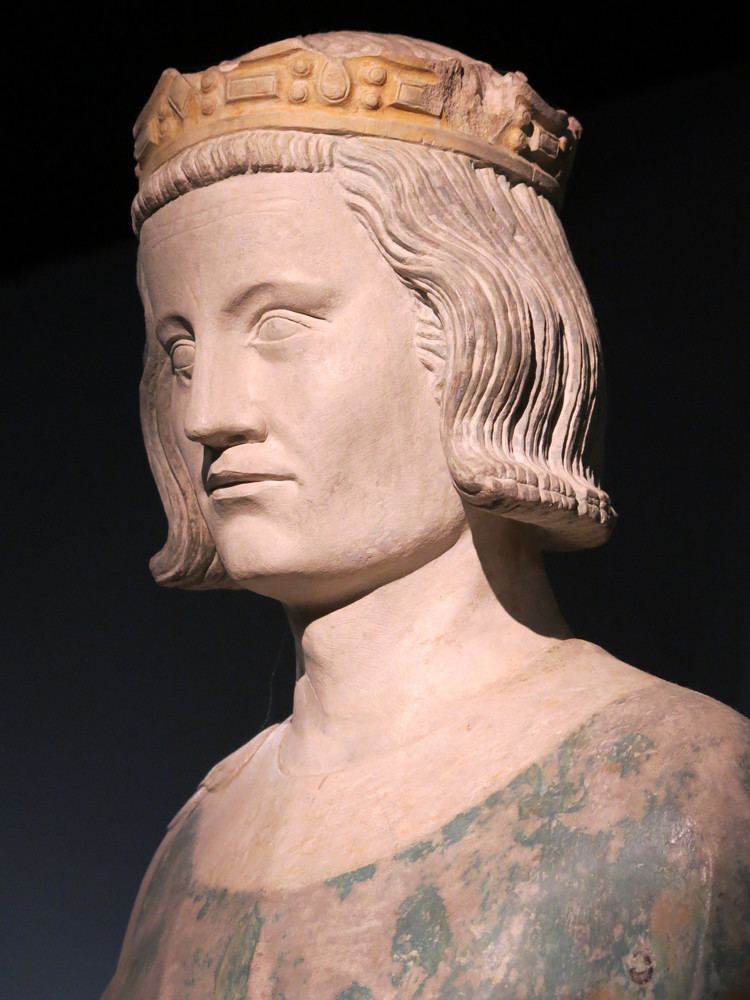
His younger brother Charles I of Sicily (1227–85) was created count of Anjou, thus founding the second Angevin dynasty.
No date is given for the beginning of Louis's personal rule. His contemporaries viewed his reign as co-rule between the king and his mother, though historians generally view the year 1234 as the year in which Louis began ruling personally, with his mother assuming a more advisory role. She continued to have a strong influence on the king until her death in 1252.
Marriage
On 27 May 1234, Louis married Margaret of Provence (1221 – 21 December 1295), whose sister Eleanor later became the wife of Henry III of England. The new queen's religious devotion made her a well suited partner for the king. He enjoyed her company, and was pleased to show her the many public works he was making in Paris, both for its defense and for its health. They enjoyed riding together, reading, and listening to music. This attention raised a certain amount of jealousy in his mother, who tried to keep them apart as much as she could.
Disputation of Paris
In the 1230s, Nicholas Donin, a Jewish convert to Christianity, translated the Talmud and pressed 35 charges against it to Pope Gregory IX by quoting a series of blasphemous passages about Jesus, Mary or Christianity. There is a Talmudic passage, for example, where Jesus of Nazareth is sent to Hell to be boiled in excrement for eternity. Donin also selected an injunction of the Talmud that permits Jews to kill non-Jews. This led to the Disputation of Paris, which took place in 1240 at the court of Louis IX, where rabbi Yechiel of Paris defended the Talmud against the accusations of Nicholas Donin. The translation of the Talmud from Judeo Aramaic to a non-Jewish, profane language was seen by Jews as a profound violation. The disputation led to the condemnation of the Talmud and the burning of thousands of copies.
Crusading
When Louis was 15, his mother brought an end to the Albigensian Crusade in 1229 after signing an agreement with Count Raymond VII, Count of Toulouse that cleared the latter's father of wrongdoing. Raymond VI, Count of Toulouse had been suspected of murdering a preacher on a mission to convert the Cathars.
Louis went on two crusades, in his mid-30s in 1248 (Seventh Crusade), and then again in his mid-50s in 1270 (Eighth Crusade).
Seventh Crusade
In 1248 Louis decided that his obligations as a son of the Church outweighed those of his throne, and he left his kingdom for a six-year adventure. Since the base of Muslim power had shifted to Egypt, Louis did not even march on the Holy Land; any war against Islam now fit the definition of a Crusade.
Louis and his followers landed in Egypt on 5 June 1249 and began his first crusade with the rapid capture of the port of Damietta. This attack caused some disruption in the Muslim Ayyubid empire, especially as the current sultan, Al-Malik as-Salih Najm al-Din Ayyub, was on his deathbed. However, the march from Damietta toward Cairo through the Nile River Delta went slowly. The rising of the Nile and the summer heat made it impossible for them to advance and follow up on their success. During this time, the Ayyubid sultan died, and the sultan's wife Shajar al-Durr set in motion a sudden power shift that would make her Queen and eventually place the Egyptian army of the Mamluks in power. On 6 April 1250 Louis lost his army at the Battle of Al Mansurah and was captured by the Egyptians. His release was eventually negotiated in return for a ransom of 400,000 livres tournois (at the time France's annual revenue was only about 1,250,000 livres tournois) and the surrender of the city of Damietta.
Four years in Palestine
Following his release from Egyptian captivity, Louis spent four years in the Latin kingdoms of Acre, Caesarea, and Jaffa, using his wealth to assist the Crusaders in rebuilding their defences and conducting diplomacy with the Islamic powers of Syria and Egypt. In the spring of 1254 he and his army returned to France.
Louis exchanged multiple letters and emissaries with Mongol rulers of the period. During his first crusade in 1248, Louis was approached by envoys from Eljigidei, the Mongol military commander stationed in Armenia and Persia. Eljigidei suggested that King Louis should land in Egypt, while Eljigidei attacked Baghdad, to prevent the Saracens of Egypt and those of Syria from joining forces. Louis sent André de Longjumeau, a Dominican priest, as an emissary to the Great Khan Güyük Khan (r. 1246-48) in Mongolia. Güyük died before the emissary arrived at his court, however, and nothing concrete occurred. Instead his queen and now regent, Oghul Qaimish, politely turned down the diplomatic offer.
Louis dispatched another envoy to the Mongol court, the Franciscan William of Rubruck, who went to visit the Great Khan Möngke (1251-1259) in Mongolia. He spent several years at the Mongol court. In 1259, Berke, the ruler of the Golden Horde, westernmost part of the Mongolian Empire, demanded the submission of Louis. On the contrary, Mongolian Emperors Möngke and Khubilai's brother, the Ilkhan Hulegu, sent a letter seeking military assistance from the king of France, but the letter did not reach France.
Eighth Crusade
In a parliament held at Paris, 24 March 1267, Louis and his three sons took the cross. On hearing the reports of the missionaries, Louis resolved to land at Tunis, and he ordered his younger brother, Charles of Anjou, to join him there. The crusaders, among whom was Prince Edward of England, landed at Carthage 17 July 1270, but disease broke out in the camp. Many died of dysentery, and on 25 August, Louis himself died.
Patron of arts and arbiter of Europe
Louis' patronage of the arts drove much innovation in Gothic art and architecture, and the style of his court radiated throughout Europe by both the purchase of art objects from Parisian masters for export, and by the marriage of the king's daughters and female relatives to foreign husbands and their subsequent introduction of Parisian models elsewhere. Louis' personal chapel, the Sainte-Chapelle in Paris, was copied more than once by his descendants elsewhere. Louis most likely ordered the production of the Morgan Bible, a masterpiece of medieval painting.
During the so-called "golden century of Saint Louis", the kingdom of France was at its height in Europe, both politically and economically. Saint Louis was regarded as "primus inter pares", first among equals, among the kings and rulers of the continent. He commanded the largest army and ruled the largest and wealthiest kingdom, the European centre of arts and intellectual thought at the time. The foundations for the famous college of theology later known as the Sorbonne were laid in Paris about the year 1257. The prestige and respect felt in Europe for King Louis IX were due more to the attraction that his benevolent personality created rather than to military domination. For his contemporaries, he was the quintessential example of the Christian prince and embodied the whole of Christendom in his person. His reputation for saintliness and fairness was already well established while he was alive, and on many occasions he was chosen as an arbiter in quarrels among the rulers of Europe.
Shortly before 1256, Enguerrand IV, Lord of Coucy, arrested and without trial hanged three young squires of Laon whom he accused of poaching in his forest. In 1256 Louis had him arrested and brought to the Louvre by his sergeants. Enguerrand demanded judgment by his peers and trial by battle, which the king refused because he thought it obsolete. Enguerrand was tried, sentenced, and ordered to pay 12,000 livres. Part of the money was to pay for masses in perpetuity for the men he had hanged.
In 1258, Louis and James I of Aragon signed the Treaty of Corbeil, under which Louis renounced his feudal overlordship over the County of Barcelona and Roussillon, which was held by the King of Aragon. James in turn renounced his feudal overlordship over several counties in southern France including Provence and Languedoc. In 1259 Louis signed the Treaty of Paris, by which Henry III of England was confirmed in his possession of territories in southwestern France and Louis received the provinces of Anjou, Normandy (Normandie), Poitou, Maine, and Touraine.
Religious nature
The perception of Louis IX as the exemplary Christian prince was reinforced by his religious zeal. Louis was a devout Catholic, and he built the Sainte-Chapelle ("Holy Chapel"), located within the royal palace complex (now the Paris Hall of Justice), on the Île de la Cité in the centre of Paris. The Sainte Chapelle, a perfect example of the Rayonnant style of Gothic architecture, was erected as a shrine for what he believed to be the Crown of Thorns and a fragment of the True Cross, supposed precious relics of the Passion of Jesus. Louis purchased these in 1239–41 from Emperor Baldwin II of the Latin Empire of Constantinople, for the exorbitant sum of 135,000 livres (the construction of the chapel, for comparison, cost only 60,000 livres).
Louis IX took very seriously his mission as "lieutenant of God on Earth", with which he had been invested when he was crowned in Reims. To fulfill his duty, he conducted two crusades, and even though they were unsuccessful, they contributed to his prestige. Everything he did was for the glory of God and for the good of his people. He protected the poor and was never heard speak ill of anyone. He excelled in penance and had a great love for the Church. He was merciful even to rebels. When he was urged to put to death a prince who had followed his father in rebellion, he refused, saying: "A son cannot refuse to obey his father."
In 1230 the King forbade all forms of usury, defined at the time as any taking of interest. Where the original Jewish and Lombard borrowers could not be found, Louis exacted from the lenders a contribution towards the crusade which Pope Gregory was then trying to launch. Louis also ordered, at the urging of Pope Gregory IX, the burning in Paris in 1243 of some 12,000 manuscript copies of the Talmud and other Jewish books. Eventually, the edict against the Talmud was overturned by Gregory IX's successor, Innocent IV.
In addition to Louis' legislation against usury, he expanded the scope of the Inquisition in France. The area most affected by this expansion was southern France where the Cathar heresy had been strongest. The rate of these confiscations reached its highest levels in the years before his first crusade, and slowed upon his return to France in 1254. In 1250, he headed a crusade, but was taken prisoner. During his captivity, he recited the Divine Office every day. After his release, he visited the Holy Land before returning to France. In all these deeds, Louis IX tried to fulfill the duty of France, which was seen as "the eldest daughter of the Church" (la fille aînée de l'Église), a tradition of protector of the Church going back to the Franks and Charlemagne, who had been crowned by the Pope Leo III in Rome in 800. Indeed, the official Latin title of the kings of France was Rex Francorum, i.e. "king of the Franks" (until Louis' grandfather's reign, Philip II whose seal reads Rex Franciae, i.e. "king of France"), and the kings of France were also known by the title "most Christian king" (Rex Christianissimus). The relationship between France and the papacy was at its peak in the 12th and 13th centuries, and most of the crusades were actually called by the popes from French soil. Eventually, in 1309, Pope Clement V even left Rome and relocated to the French city of Avignon, beginning the era known as the Avignon Papacy (or, more disparagingly, the "Babylonian captivity").
He was renowned for his charity. Beggars were fed from his table, he ate their leavings, washed their feet, ministered to the wants of the lepers, and daily fed over one hundred poor. He founded many hospitals and houses: the House of the Filles-Dieu for reformed prostitutes; the Quinze-Vingt for 300 blind men (1254), hospitals at Pontoise, Vernon, Compiégne.
St. Louis installed a house of the Trinitarian Order in his château of Fontainebleau. He chose Trinitarians as his chaplains, and was accompanied by them on his crusades. In his spiritual testament he wrote: "My dearest son, you should permit yourself to be tormented by every kind of martyrdom before you would allow yourself to commit a mortal sin."
Children
- Blanche (12 July/4 December 1240 – 29 April 1243), died in infancy.
- Isabella (2 March 1241 – 28 January 1271), married Theobald II of Navarre.
- Louis (23 September 1243/24 February 1244 – 11 January/2 February 1260). Betrothed to Berengaria of Castile in Paris on 20 August 1255.
- Philip III (1 May 1245 – 5 October 1285), married firstly to Isabella of Aragon in 1262 and secondly to Maria of Brabant in 1274.
- John (1246/1247 – 10 March 1248), died in infancy.
- John Tristan (8 April 1250 – 3 August 1270), Count of Valois, married Yolande II, Countess of Nevers.
- Peter (1251 – 6/7 April 1284), Count of Perche and Alençon, married Joanne of Châtillon.
- Blanche (early 1253 – 17 June 1320), married Ferdinand de la Cerda, Infante of Castile.
- Margaret (early 1255 – July 1271), married John I, Duke of Brabant.
- Robert (1256 – 7 February 1317), Count of Clermont, married Beatrice of Burgundy. The French crown devolved upon his male-line descendant, Henry IV, when the legitimate male line of Robert's older brother Philip III died out in 1589.
- Agnes (1260 – 19/20 December 1327), married Robert II, Duke of Burgundy.
Louis had his two children that died in infancy to be buried at the Cistercian abbey of Royaumont; in 1820 they were transferred to Saint-Denis Basilica.
Death and legacy
During his second crusade, Louis died at Tunis on 25 August 1270, in an epidemic of dysentery that swept through his army. As Tunis was Muslim territory, his body was subject to the process known as mos Teutonicus (a postmortem funerary custom used in medieval Europe whereby the flesh was boiled from the body, so that the bones of the deceased could be transported hygienically from distant lands back home) for its transportation back to France. He was succeeded by his son, Philip III.
His heart and intestines, however, were conveyed by his younger brother, Charles I of Naples, for burial in the cathedral of Monreale near Palermo. His bones were carried in a lengthy processional across Sicily, Italy, the Alps, and France, until they were interred in the royal necropolis at Saint-Denis in May 1271. Charles and Philip later disbursed a number of relics to promote his veneration.
Veneration as a saint
Pope Boniface VIII proclaimed the canonization of Louis in 1297; he is the only French king to be declared a saint. Louis IX is often considered the model of the ideal Christian monarch. The impact of his canonization was so great that many of his successors were named Louis.
Named in his honour, the Sisters of Charity of St. Louis is a Roman Catholic religious order founded in Vannes, France, in 1803. A similar order, the Sisters of St Louis, was founded in Juilly in 1842.
He is honoured as co-patron of the Third Order of St. Francis, which claims him as a member of the Order. Even in childhood, his compassion for the poor and suffering people had been obvious to all who knew him and when he became king, over a hundred poor people ate in his house on ordinary days. Often the king served these guests himself. Such acts of charity, coupled with Louis' devout religious practices, gave rise to the legend that he joined the Third Order of St. Francis. Though it is unlikely that Louis did join the order, his life and actions proclaimed him one of them in spirit.
Places named after Saint Louis
The cities of San Luis Potosí in Mexico; St. Louis, Missouri; St. Louis Park, Minnesota; St. Louis, Michigan; San Luis, Arizona; San Luis, Colorado; Saint-Louis du Sénégal; Saint-Louis in Alsace; as well as Lake Saint-Louis in Quebec, the Mission San Luis Rey de Francia in California and São Luís, Maranhão in Brazil are among the many places named after the French king and saint.
The Cathedral Saint-Louis in Versailles; the Basilica of St. Louis, King of France completed in 1834 and the Cathedral Basilica of St. Louis completed in 1914, both in St. Louis, Missouri; and the St. Louis Cathedral, New Orleans were also named for the king. The French royal Order of Saint Louis (1693–1790 and 1814–1830), the Île Saint-Louis as well as a hospital in the 10th arrondissement of Paris also bear his name. The national church of France in Rome also carries his name: San Luigi dei Francesi in Italian or Saint Louis of France in English. Also the Cathedral of St Louis in Plovdiv, Bulgaria, the Church of St Louis in Moscow, Russia, and rue Saint Louis of Pondicherry
Port-Louis, the capital city of Mauritius, as well as its cathedral are also named after St. Louis, who is the patron saint of the island.
Notable portraits
A bas-relief of St. Louis is one of the carved portraits of historic lawmakers that adorns the chamber of the United States House of Representatives.
Saint Louis is also portrayed on a frieze depicting a timeline of important lawgivers throughout world history in the Courtroom at the Supreme Court of the United States.
A statue of St. Louis by the sculptor John Donoghue stands on the roofline of the New York State Appellate Division Court at 27 Madison Avenue in New York City.
The Apotheosis of St. Louis is an equestrian statue of the saint, by Charles Henry Niehaus, that stands in front of the Saint Louis Art Museum in Forest Park.
A heroic portrait by Baron Charles de Steuben hangs in the Basilica of the National Shrine of the Assumption of the Blessed Virgin Mary in Baltimore. An 1821 gift of King Louis XVIII of France, it depicts St. Louis burying his plague-stricken troops before the siege of Tunis at the beginning of the Eighth Crusade in 1270.
